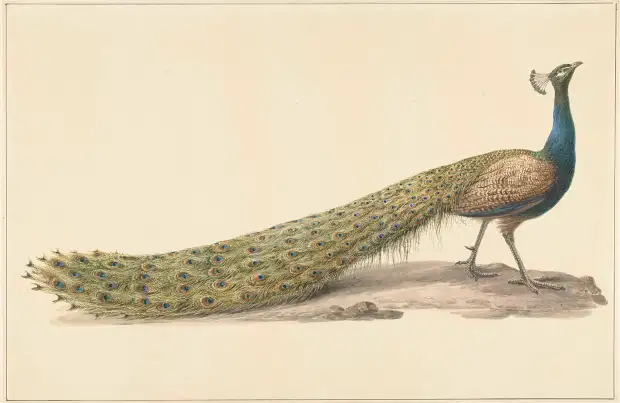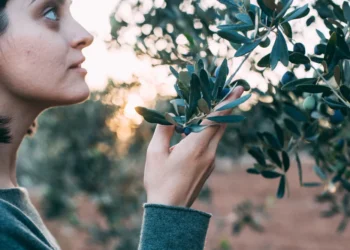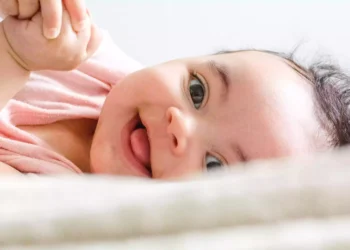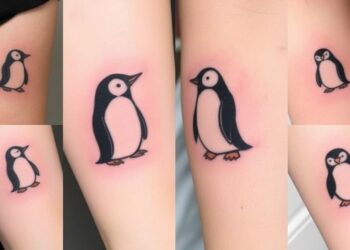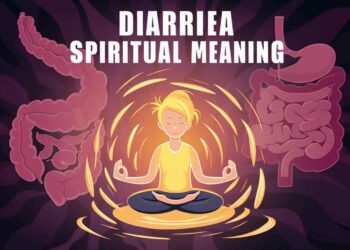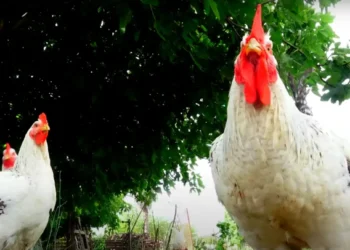Where did the belief that peacock feathers bring bad luck originate?
Origin of the belief
The belief that peacock feathers bring bad luck has been around for centuries, and its origin is not entirely clear. One theory is that it stems from ancient Greek mythology, where the goddess Hera was said to have had 100 eyes on her peacock tail feathers. Another theory suggests that it comes from early Christianity, where the “eyes” on the peacock feathers were seen as a symbol of the devil’s eyes.
Spread of the belief
Regardless of its origin, this superstition has been perpetuated across different cultures and regions over time. In some parts of Europe, it was believed that if a peacock feather was brought into a house, it would bring illness or death to someone in the family. In India, where peacocks are considered sacred birds in Hindu mythology, it is believed that taking their feathers can anger the gods and cause misfortune.
Conclusion:
Overall, while there isn’t a clear answer as to where this superstition originated from, it has persisted throughout history and across different cultures.
Are there any cultures or traditions that view peacock feathers as a symbol of good luck?
Cultures with positive associations
While many cultures view peacock feathers as symbols of bad luck, there are also those who associate them with good fortune. In China, for example, peacocks are considered to be auspicious animals associated with beauty and prosperity. The Chinese also believe that having a painting or image of a peacock in one’s home can attract good luck and positive energy.
In some Native American tribes such as the Hopi people, peacock feathers are seen as symbols of protection and spiritual guidance. They use them in various ceremonies and rituals to bring blessings and ward off evil spirits.
Conclusion:
While the belief that peacock feathers are unlucky is widespread, there are also cultures and traditions that view them as symbols of good luck and positive energy.
What are some common superstitions associated with peacock feathers?
Superstitions
There are several superstitions associated with peacock feathers across different cultures. Some of these include:
– The belief that bringing a peacock feather into a house will bring bad luck or cause illness or death to someone in the family.
– In India, it is believed that taking peacock feathers can anger the gods and cause misfortune.
– In some parts of Europe, it was thought that if a woman had a peacock feather in her bedroom, she would remain unmarried for life.
– It is considered unlucky to give someone a single peacock feather as a gift, as it is believed to represent an “evil eye” or negative energy.
These superstitions highlight the negative associations that many people have with peacock feathers and their perceived ability to bring bad luck or negative energy.
Have there been any scientific studies to disprove the notion that peacock feathers bring bad luck?
Lack of scientific evidence
While there have been no specific studies on whether or not peacock feathers actually bring bad luck, there is no scientific evidence to support this belief. Superstitions such as this one are based on cultural beliefs and traditions rather than empirical data.
In fact, many people who use or display peacock feathers do so without experiencing any negative consequences. It’s possible that the belief in their bad luck is simply a self-fulfilling prophecy – if someone believes that something will bring them bad luck, they may be more likely to experience negative events.
While there is no scientific evidence to support the belief that peacock feathers bring bad luck, this superstition persists in many cultures and traditions.
Is it considered disrespectful to display peacock feathers in certain settings or situations?
Cultural sensitivity
In some cultures, it may be considered disrespectful or inappropriate to display peacock feathers in certain settings or situations. For example, in Hinduism, the peacock is a sacred bird associated with Lord Krishna and is often depicted in religious art. Taking their feathers or using them for decorative purposes without proper cultural context could be seen as disrespectful.
Similarly, some Native American tribes consider the use of peacock feathers outside of their cultural context to be cultural appropriation. It’s important to be mindful of the origins and significance of symbols like these when incorporating them into one’s own art or decor.
It’s important to be culturally sensitive and respectful when using symbols like peacock feathers that have significant meaning in certain cultures. Understanding their cultural significance can help prevent unintentional disrespect or appropriation.
Are there any specific events or occasions where it is believed that using peacock feathers is particularly unlucky?
Unlucky occasions
There are several events or occasions where it is believed that using peacock feathers can bring bad luck. Some examples include:
– Weddings: In some cultures, it is believed that having a single peacock feather at a wedding can bring bad luck and cause the marriage to fail.
– Theatrical performances: It was once believed that having real peacock feathers on stage during a performance would cause actors to forget their lines or otherwise mess up.
– Funerals: In some parts of Europe, bringing a peacock feather into a funeral procession was thought to bring death upon someone else in the family.
These examples demonstrate the widespread belief that peacock feathers are associated with bad luck and negative energy, particularly in certain contexts or situations.
Has the belief about peacock feathers and bad luck changed over time, and if so, how?
Changing beliefs
The belief that peacock feathers bring bad luck has persisted for centuries across different cultures. However, attitudes towards this superstition have shifted over time.
In some cultures, the use of peacock feathers was once seen as taboo but has since become more accepted. For example, in China, where peacocks were once considered unlucky animals associated with death and mourning, they are now seen as symbols of beauty and prosperity.
Similarly, in Western culture, there has been a resurgence of interest in bohemian or “boho” decor styles that often incorporate peacock feathers. While some people still view them as unlucky, others see them simply as decorative elements without any negative associations.
Attitudes towards the superstition surrounding peacock feathers have shifted over time in different cultures. While some people still view them as unlucky today, others see them simply as decorative elements without any negative connotations.
Do people still avoid using or displaying peacock feathers because of their perceived negative connotations today?
Current attitudes
While the belief that peacock feathers bring bad luck persists in many cultures today, there are also those who do not subscribe to this superstition. As a result, some people may choose to use or display peacock feathers despite their perceived negative connotations.
However, it’s important to note that cultural sensitivity should be taken into account when incorporating symbols like these into one’s own decor or art. Being mindful of their cultural significance can help prevent unintentional disrespect or appropriation.
While some people may still avoid using or displaying peacock feathers because of their perceived negative connotations, others choose to incorporate them into their decor or art regardless.
Are there any alternative beliefs or practices that can counteract the supposed bad luck of peacock feathers?
Counteracting bad luck
There are several beliefs or practices that some people use to counteract the supposed bad luck of peacock feathers. These include:
– Placing a peacock feather in a vase with fresh flowers: Some people believe that this can bring good energy and harmony into a room.
– Burning sage: This is a common practice in many spiritual traditions and is believed to help cleanse negative energy from a space.
– Using crystals: Certain types of crystals are believed to have protective properties and can be used to ward off negative energy.
It’s important to note that these practices are not scientifically proven and may not work for everyone.
While there are no guaranteed ways to counteract the supposed bad luck of peacock feathers, some people use alternative beliefs or practices such as burning sage or using crystals to try and ward off negative energy.
How do different cultures interpret the symbolism of peacocks and their feathers?
Cultural interpretations
Peacocks and their feathers hold different meanings across different cultures. Some examples include:
– In Hinduism, the peacock is associated with Lord Krishna and is seen as a symbol of beauty, grace, and immortality.
– In China, the peacock is associated with prosperity, good fortune, and happiness.
– In Native American culture, the peacock feather is seen as a symbol of protection, guidance, and spiritual growth.
These interpretations highlight how symbols like peacocks and their feathers can hold significant cultural meaning beyond just their aesthetic appeal.
Peacocks and their feathers hold different meanings across different cultures, highlighting the importance of understanding their cultural significance beyond just their decorative appeal.
In what ways have artists and designers incorporated images of peacocks and their feathers into their work despite the superstitions surrounding them?
Artistic representations
Despite the superstitions surrounding peacock feathers, many artists and designers have incorporated them into their work in various ways. Some examples include:
– Fashion: Peacock feathers have been used in fashion for centuries, from elaborate headdresses to statement jewelry pieces.
– Home decor: Peacock feathers can add a touch of exoticism and glamour to home decor, whether as wall art or as part of a centerpiece.
– Art: Many artists throughout history have depicted peacocks and their feathers in paintings, sculptures, and other works of art.
These artistic representations demonstrate how symbols like peacocks and their feathers can hold aesthetic appeal beyond any perceived negative connotations.
Despite the superstitions surrounding peacock feathers, many artists and designers continue to incorporate them into their work as decorative elements with aesthetic appeal.
Are there any historical figures or events associated with the use of peacock feathers, either positively or negatively?
Historical associations
There are several historical figures and events associated with the use of peacock feathers. Some examples include:
– Royalty: Peacock feathers were once a symbol of royalty and were often used in crowns, coats of arms, and other regal symbols.
– Ancient Greece: The goddess Hera was said to have had 100 eyes on her peacock tail feathers in Greek mythology.
– Victorian era: In Victorian England, it was fashionable to wear real peacock feather accessories such as fans or hair ornaments.
These associations demonstrate how symbols like peacocks and their feathers have held different meanings throughout history.
Peacock feathers have been associated with various historical figures and events, highlighting their changing cultural significance over time.
Have any notable celebrities or public figures made statements about their views on the superstitions surrounding peacock feathers?
Celebrity opinions
There are no specific examples of notable celebrities or public figures making statements about their views on the superstitions surrounding peacock feathers. However, many celebrities and influencers have incorporated them into their fashion or decor choices without any apparent concern for negative associations.
This suggests that attitudes towards the superstition may be shifting in some circles, as more people view peacock feathers simply as decorative elements rather than symbols of bad luck.
While there are no specific examples of notable celebrities or public figures making statements about the superstitions surrounding peacock feathers, many people continue to use them in fashion and decor without any apparent concern for negative associations.
How do people typically react when they receive a gift containing a peacock feather, knowing its association with bad luck?
Gifting reactions
People’s reactions to receiving a gift containing a peacock feather may vary depending on their cultural background and personal beliefs. Some may view it as an exotic and beautiful gift without any negative connotations, while others may feel uncomfortable accepting it due to its perceived association with bad luck.
It’s important to be mindful of these potential reactions when giving gifts containing symbols like peacock feathers, especially if you’re not sure how the recipient will interpret them.
People’s reactions to receiving a gift containing a peacock feather may vary depending on their cultural background and personal beliefs. It’s important to be mindful of these potential reactions when giving gifts containing symbols like these.
Can wearing clothing or accessories adorned with fake (or real) peacock feathers still be considered unlucky?
There is no clear answer to whether wearing clothing or accessories adorned with fake or real peacock feathers can still be considered unlucky. While some people may believe that the negative associations with peacock feathers apply regardless of their authenticity, others may see a distinction between real and fake feathers.
Ultimately, whether or not someone believes that wearing peacock feather adornments is unlucky will depend on their personal beliefs and cultural background.
Whether wearing clothing or accessories adorned with fake or real peacock feathers is considered unlucky will depend on individual beliefs and cultural context.
In conclusion, the belief that peacock feathers bring bad luck is a superstition without any scientific evidence to support it. It is important to approach such beliefs with a rational mindset and not let them limit our experiences or beliefs.
